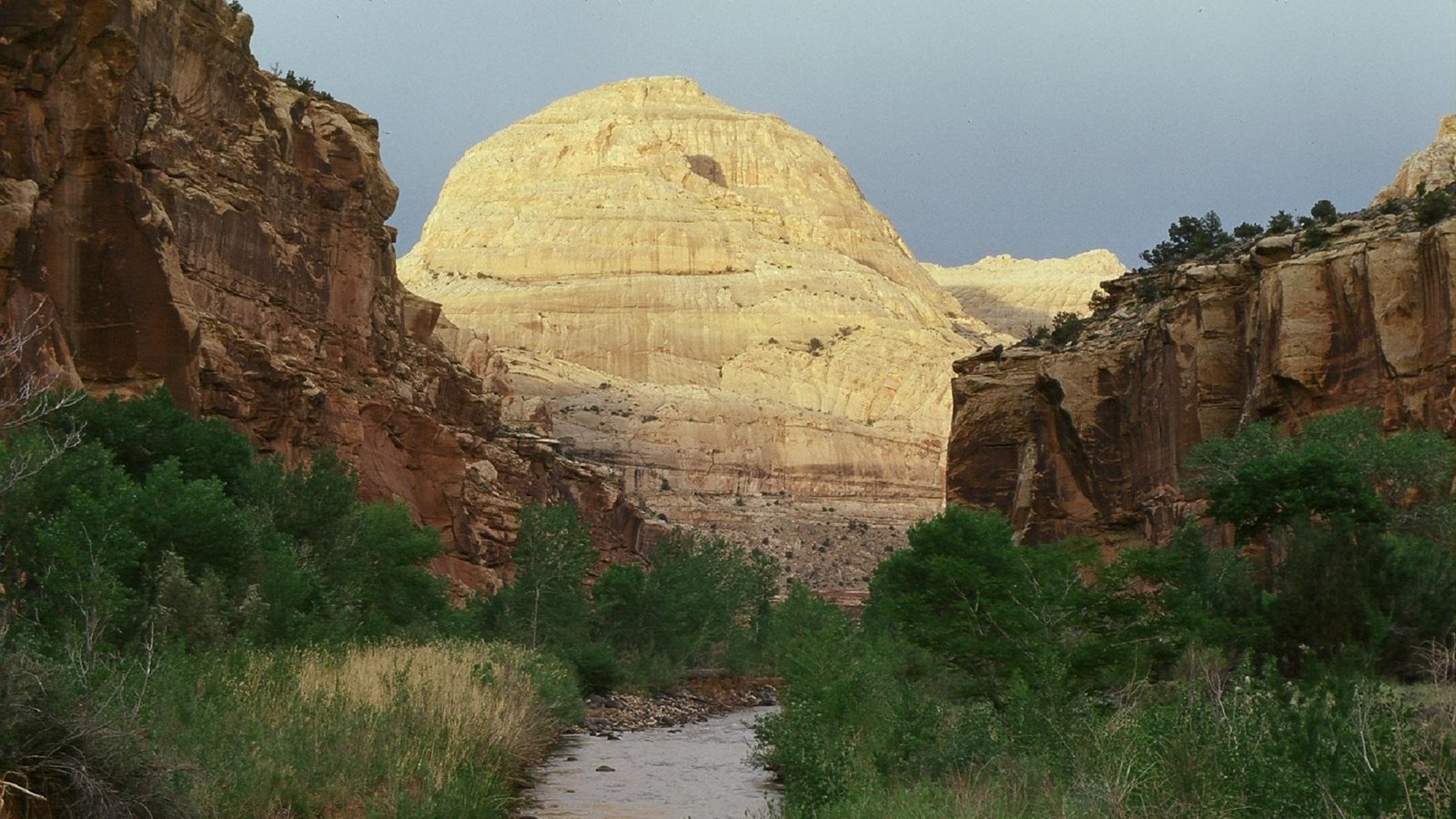Last updated: February 22, 2021
Place
Capitol Dome

NPS
Parking - Auto, Parking - Bus/RV, Scenic View/Photo Spot, Toilet - Vault/Composting
Capitol Dome is best viewed from the Hickman Bridge Trailhead, on Utah State Route 24, two miles (3.2 km) east of the visitor center. The trailhead parking area has a vault toilet and is suitable for passenger cars and a limited number of RVs. Capitol Dome is also visible from Hickman Bridge, Rim Overlook, Navajo Knobs, and Cohab Canyon trails.
History
Capitol Reef National Monument (established 1937) was focused on a small area around the Fremont River, known as Capitol Reef: capitol for the white domes of Navajo Sandstone that resemble capitol building domes, and reef for the rocky cliffs which are a barrier to travel, like an ocean reef. Local supporter Ephraim Portman Pectol and Yellowstone National Park Superintendent Roger Toll named the area in 1935, before it was established by President Franklin D. Roosevelt.
Geology
The white Navajo Sandstone dome known as “Capitol Dome,” isn’t actually a true dome. Capitol Dome is a series of fins that blend together, resembling a dome. This is why visitors can only see this iconic feature heading east on Utah State Route 24, and not heading west. The fins become noticeable in late afternoon light, when shadows appear.
Navajo Sandstone was deposited about 180 million years ago, when most of Utah was covered by massive sand dunes. The dunes spanned such a large area, geologists call it a "sand sea" to convey the expanse. For Utah, this was an extremely arid time above ground, although a high water table below ground eventually helped solidify the sand dunes into stone.
An even closer look at Capitol Dome reveals fine tilted layers, or cross bedding, created by ancient sand dunes. This sandstone played an important role in the protection of this landscape. When Capitol Reef National Monument was designated in 1937, the enabling legislation highlighted these “ancient sand dune deposits of unusual scientific value.”
Learn more about the geology of Capitol Reef!
